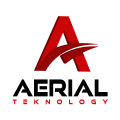Industries
Photography
Photography Industry
Information technology has revolutionized the photography industry, fundamentally changing how we capture, edit, and share images. Digital cameras and high-resolution sensors have replaced film, allowing for instant previews and extensive post-processing.
Image editing software and cloud storage make it easier to enhance and store photos, while social media and online platforms facilitate sharing and exposure for photographers.

Artificial intelligence and machine learning are transforming image recognition, organization, and even content creation. As technology continues to evolve, IT remains at the forefront of driving innovation and creativity in the photography industry.
Photography Industry IT Challenges

The photography industry faces several IT challenges as it adapts to the digital age. Data management and storage of high-resolution images demand robust infrastructure and secure solutions.
Software complexity and compatibility issues can hinder workflow efficiency for photographers and post-production teams.
Protecting intellectual property and copyrights in the digital realm is a constant challenge, with the risk of unauthorized image distribution. Additionally, the rapid pace of technological advancements necessitates continuous learning and adaptation for professionals.
Balancing the convenience of cloud-based services with privacy and data security concerns is another ongoing struggle. Overcoming these IT challenges is vital for the photography industry to harness the full potential of digital technology.
How Aerial Teknology is Helping the Photography Industry?
Aerial Teknology IT and digital services have played a transformative role in the photography industry, revolutionizing how photographers capture, edit, and share images. Here’s an in-depth look at how IT and digital services are benefiting the photography sector:
Cloud Storage
Data storage of the high-resolution images is easier in large volumes. Adobe Creative Cloud, Dropbox, and Google Drive are cloud-based platforms that enable photographers to organize work and make it accessible from anywhere.


Online Portfolios
Photographers can build and showcase their portfolios on websites and platforms that are accessible to the global audience. Aerial Teknology aided the photography industry with the ability to create visually appealing portfolios to boost their client base and reach their audiences via search engine optimization and social media marketing.
E-Commerce
Digital technology allows the photography industry to sell its services via online marketplaces and e-commerce platforms. Photographers can sell their work online with digital licensing on specialized platforms. Aerial teknology builds customized websites and portfolios for photographers to sell their work online by connecting with a global audience.
Social Media
Aerial Teknology utilizes social media platforms like Facebook, Instagram, LinkedIn, and Pinterest as tools to boost sales. There are digital marketplaces where photographers can share their work and get exposure through visually appealing content for their target clients.
Stock Images
Stock images are now readily available for people around the globe due to the convenience and availability of buyers and photographers. There are online marketplaces for photographers to sell their work such as Adobe Stock and Shutterstock. Aerial Teknology can help photographers in creating their online marketplace.
Data Management
Photographers can enhance their productivity, save time, and utilize extensive image libraries to search tag, and organize their work. Aerial Teknology’s team builds data management systems where artists can store, share, and manage their work.
Printable
Photographers can create high-quality images enabled with consistency and precision using advanced IT-driven technology. The use of technology ensures that the output matches the vision of the clients.
Future of IT in the Photography Industry
The exciting journey of information technology in the IT industry is transformative and opens the paths for numerous opportunities for photographers. Aerial Teknology serves the photography industry in following emerging trends due to technological innovation. Let’s explore the horizons of IT in the photography industry.
- Tasks are automated which allows professional consistency and accurate results with the help of AI-driven tools.
- Specialized equipment can be used to capture 360-degree images that provide a new dimension to artistic expression and storytelling.
- Smart cameras will become more prevalent due to AI capabilities. This technology allows photographers in composition, automatically optimize, and suggest settings based on the scenes that make photography more accessible to beginners.
- Copyright protection and provenance tracking help in leveraging the blockchain technology that aids image tracking.
- Image processing in real-time enabled with edge computing reduces the requirement of extensive post-production. Wildlife and sports photography benefited from direct image processing.
- Image search capabilities will improve with AI-powered image recognition. It makes it easier for the photography professional to search and find their work easily, as well as organize and manage it efficiently.
- The use of digital technology has significantly reduced the use of paper and energy consumption, proposed environment-friendly techniques for printing, and enhanced the efficiency of workflow.
- Remote education and training in photography have opened the avenues for skill building across nations via virtual reality and online platforms.
The future of IT in the photography industry is marked by technological advancements that enhance creativity, accessibility, and efficiency. As the industry continues to evolve, IT will remain at the forefront, empowering photographers to push the boundaries of their art and connect with audiences in new and innovative ways.


